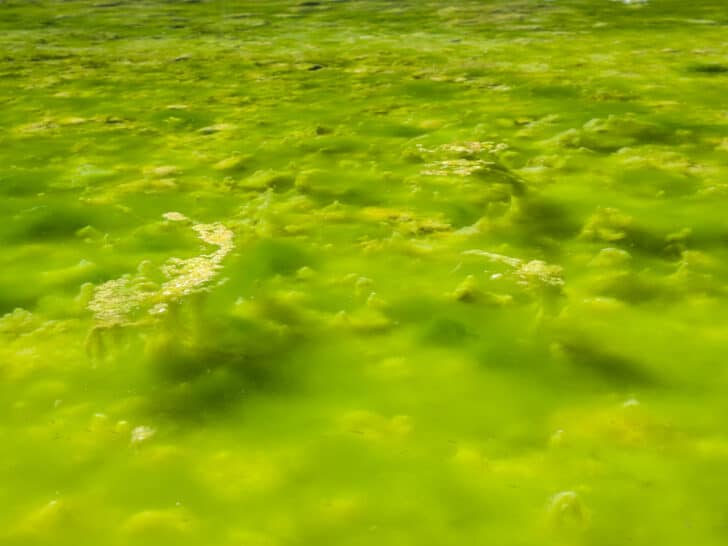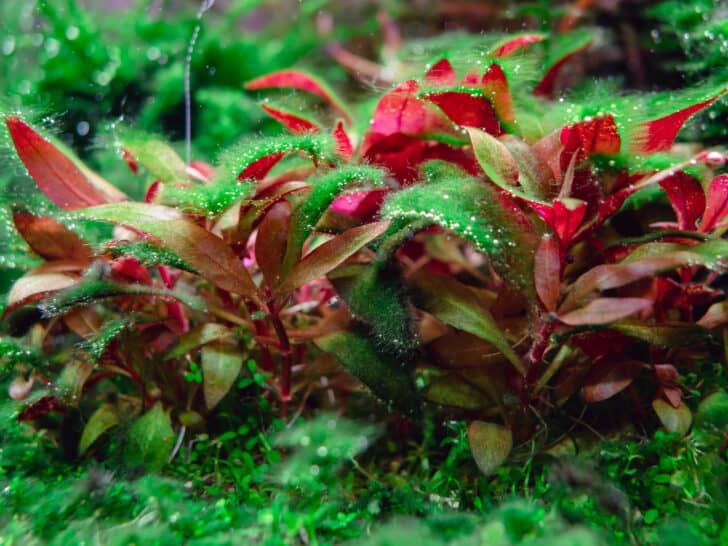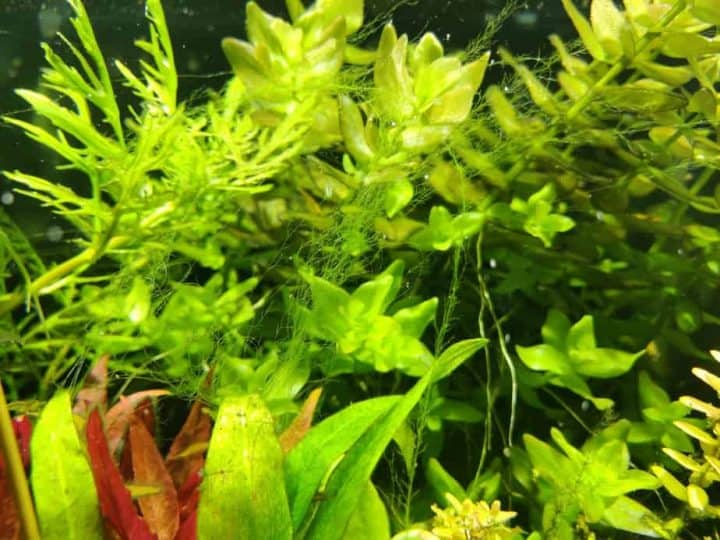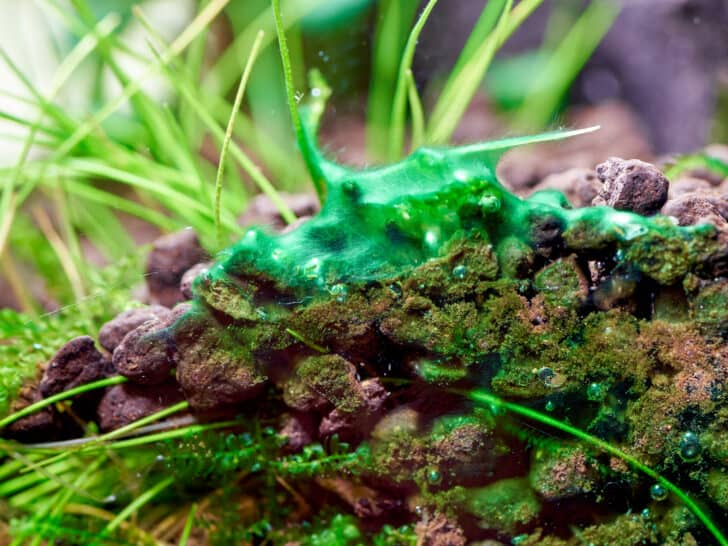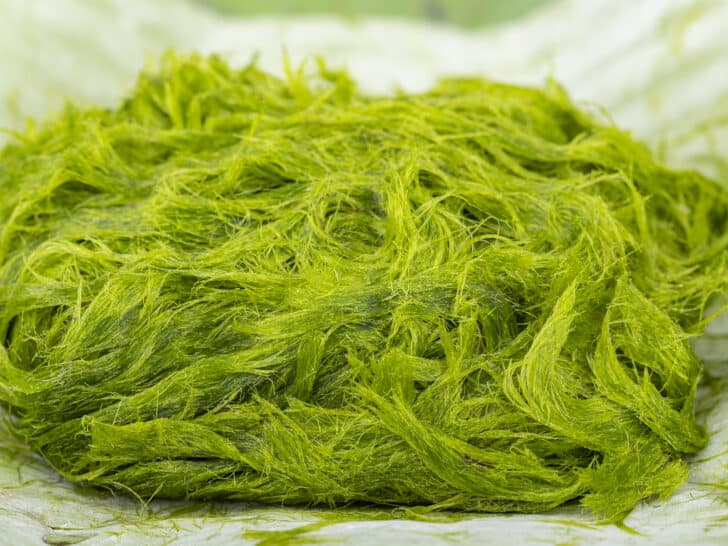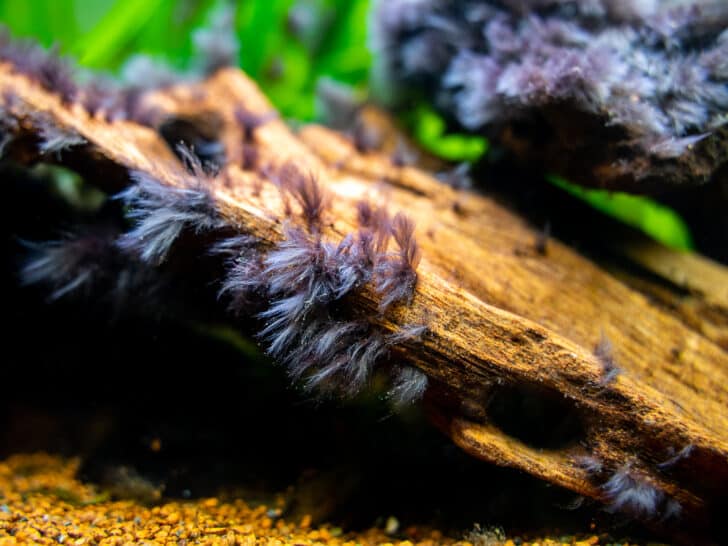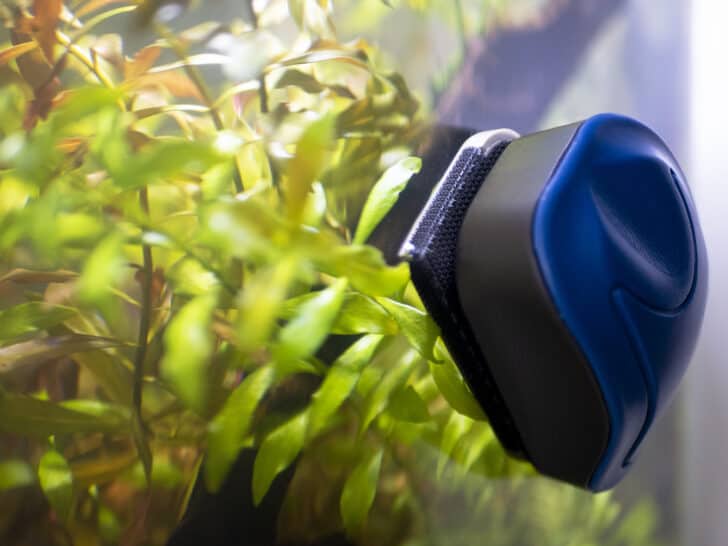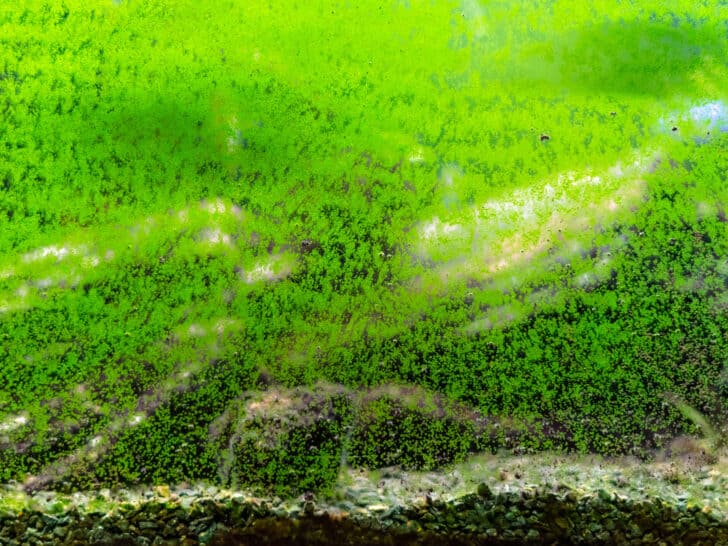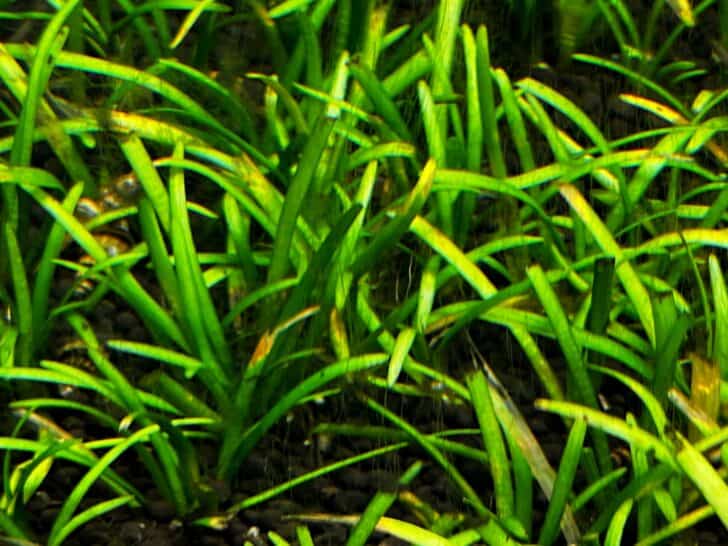One of the most frustrating and painstaking issues that I’ve ever had to deal with in an aquarium is a bloom of green algae. Luckily, thanks to my experience, I also know how to take care of it.
Quick Answer
Green algae can be removed from aquariums through physical removal, by adding algae-eating fish and critters, by using dedicated algae treatments, by blocking light out from the aquarium, by upgrading or maintaining your filtration unit, and by removing excess nutrients from the water.
Keep reading to find out what exactly green algae is, what causes it, how to prevent it, and how to remove it from your aquarium.
What Is Green Algae?
Green algae is one of the most common types of algae found in aquariums, and it is totally harmless. Sure, it can multiply very quickly and take over your tank, even to the point where it might start to suffocate your other plants.
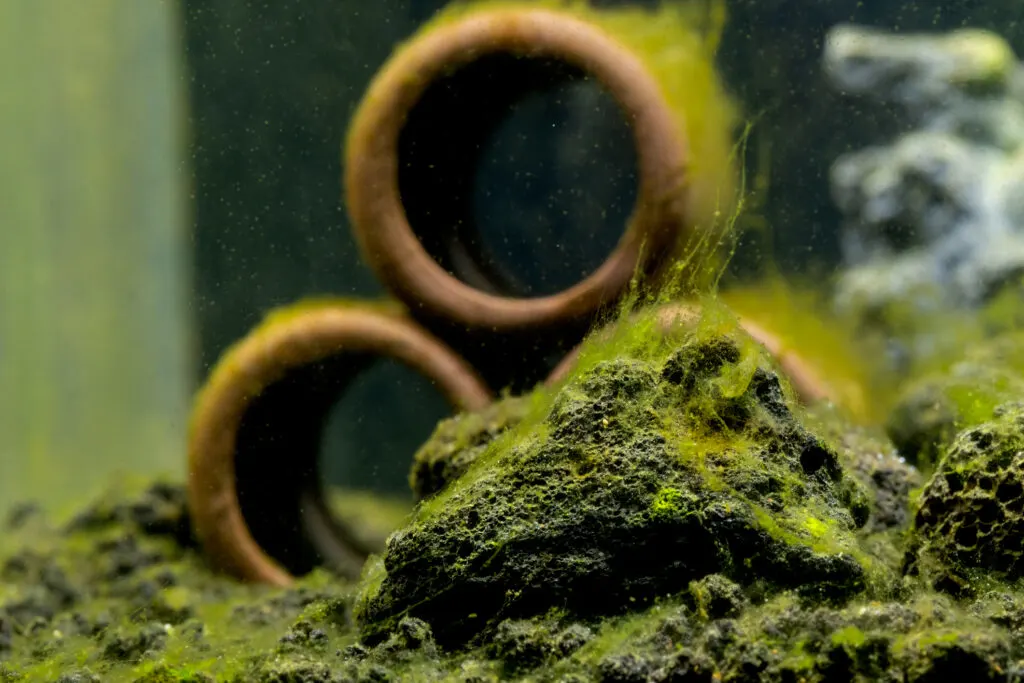
That said, it’s really not harmful to fish at all and does not release any toxic substances. In fact, there are actually many fish that feed on this type of algae and use it as a source of nutrients.
This type of algae, green algae, is also sometimes referred to as green hair algae or green spot algae. It tends to take the form of short green hairs and may grow on substrate, decorations, rocks, driftwood, and sometimes on aquarium glass as well.
What Causes Green Algae?
Before we can talk about how to prevent and remove green algae from an aquarium, it’s important for you to know what causes it in the first place.
Excessive Lighting
One of the main causes of that green algae outbreak in your aquarium is excessive lighting. If your aquarium lights are on for more than 10 or 12 hours a day, or if your aquarium sits in a window where it gets a lot of sunlight, this is a driving factor for the growth of algae.
Just like other plants, algae requires sunlight to perform photosynthesis, which it uses to grow and multiply. The more light the algae gets, the faster it can grow and multiply.
Nutrient Imbalances
The other main cause of a green algae outbreak in your aquarium is a nutrient imbalance, specifically if there is too much phosphate and nitrate in the water. Nutrient imbalances of this kind can have several causes.
First and foremost, if your aquarium filter is not working properly, and removing all sorts of debris from the water, this is a big cause.
Things like decaying plant matter, uneaten fish food, and fish waste all release substances into the water that algae can feed on. Therefore, having a filter that is not working properly, or a simple lack of tank maintenance and water changes, can cause algae blooms to occur.
Furthermore, this problem is only compounded if you overfeed your fish, because overfeeding your fish leads to a lot of uneaten fish food floating around in the water, and fish that constantly eat also create a lot of waste.
It may also be the fact that you just have way too many fish in a small space, therefore making it hard for your filter to keep up.
How to Remove Green Algae
Here are some of the easiest ways to remove green algae from a fish tank.
Physical Removal
Although you probably won’t get all of the algae through physical removal, using sponges to wipe away as much of it as you can will go a long way. You can also use aquarium glass magnets to clean your tank walls, and your gravel vacuum (like this one) to suck up as much of the algae from the bottom of the tank as you can.
On that note, maintaining your decorations, filters, and other pieces of hardware and hardscaping is required as well.
You can remove rocks, driftwood, and more from the aquarium, physically remove the algae, and then even soak these things in a diluted bleach bath for about 5 minutes.
Bleach should kill virtually all types of algae. Just be sure to thoroughly rinse the aquarium decorations before putting them back in the tank, because bleach certainly is not good for fish.
Using Algae-Eating Fish
A really simple solution here is to just add some algae eating fish and other creatures into the tank.
Some of the most popular ones include the common Molly, the Siamese algae eater, the Florida flagfish, the whiptail catfish, the amano shrimp, various types of catfish, the cherry shrimp, and a wide variety of snails.
Just make sure that any new animals you add into the tank are compatible with the ones you have present.
Block Out or Reduce Lighting
Algae requires light to survive, and a few days without it will effectively kill all of the algae in your fish tank. If the algae blooms are very severe, some people may use various items to block out as much light from the tank as possible, with the aim being to block out 100% of the light.
Anywhere between three and seven days after you start blocking out the light, the algae should be totally dead. Of course, you have to be careful here because your fish and other aquarium plants also need light, so there is a fine balance you’ll need to strike.
Upgrade or Maintain Your Filter
A big part of killing the algae in your fish tank has to do with removing excess nutrients that it is currently feeding on.
Therefore, ensuring that you have a good filtration unit that effectively engages in all three major types of water filtration, including mechanical, biological, and chemical filtration, is essential to this process. If you don’t have a good aquarium filter, this problem will just keep happening.
Perform a Water Change
To remove a lot of the algae from the water at once, you can also perform a water change. Generally speaking, it is not recommended to perform a water change of more than 30% at once, as this can be harmful to your fish. However, if the situation is severe, a one-time water change of 50% may be warranted.
Use an Algae Killer
If all else fails, the other solution here is to use an aquarium safe algae killing chemical. There are plenty of products out there designed specifically for this purpose, which should not harm your fish or other aquarium plants.
How to Prevent Green Algae
Before we call it a day, let me provide you with a few great tips on how to prevent green algae from growing in your aquarium in the first place.
- Always sterilize or decontaminate new plants, rocks, driftwood, and other decorations using a diluted bleach solution.
- Make sure that you don’t overstock your tank with fish. A rule of thumb is that you should have no more than one inch of fish per every two gallons of water.
- Don’t overfeed your fish, because uneaten fish food and high levels of fish waste both contribute to nutrient imbalances that allow algae to grow.
- Ensure that you have a working filter that engages in all three major types of water filtration, as this will help to remove nutrients from the water that algae will otherwise feed off of.
- Making sure that you have a lot of live plants that eat up any nutrients in the water is beneficial as well. The more plants you have, the more nutrients they consume, the less nutrients are present for the algae.
- Performing regular tank maintenance and weekly water changes is another great way to remove algae buildups while also removing excess nutrients from the water.
- Having an effective cleanup crew, such as a variety of algae eating fish, shrimp, and snails will also go a long way in prevention. Algae is actually full of nutrients!
Conclusion
Now that I’ve told you everything you need to know about green algae in your aquarium, you should be able to spot it, remove it, and prevent it from occurring again.

